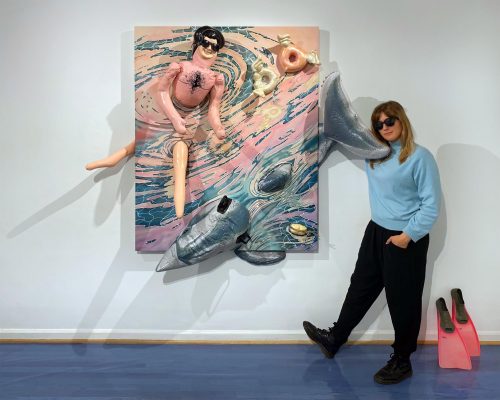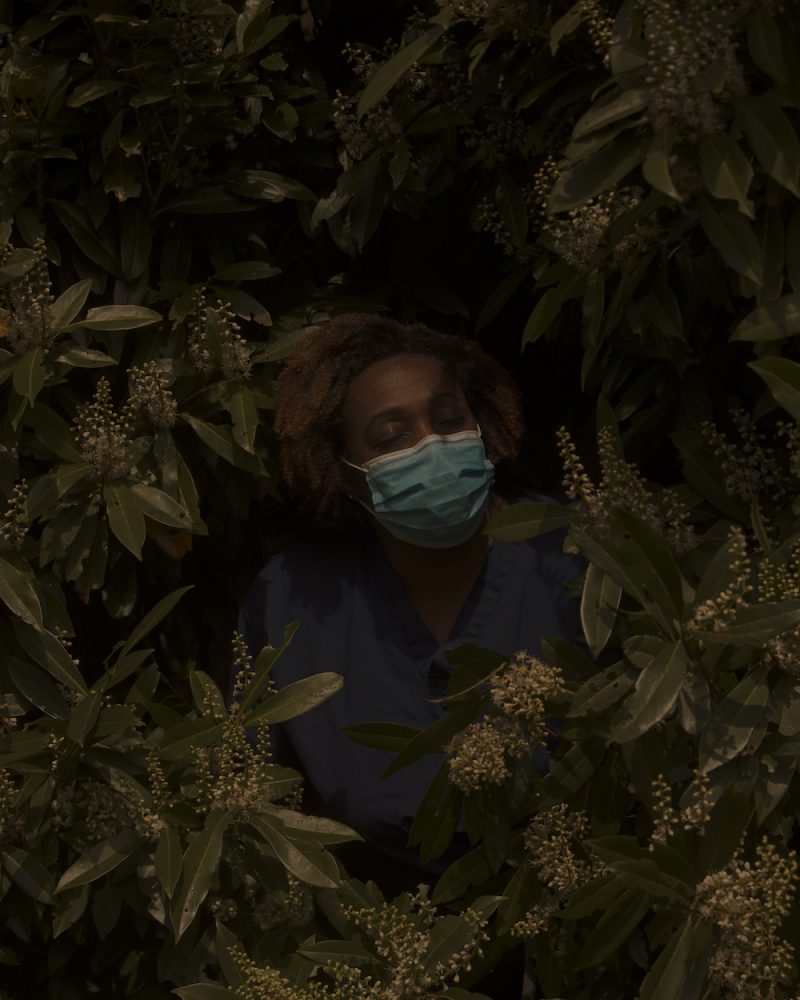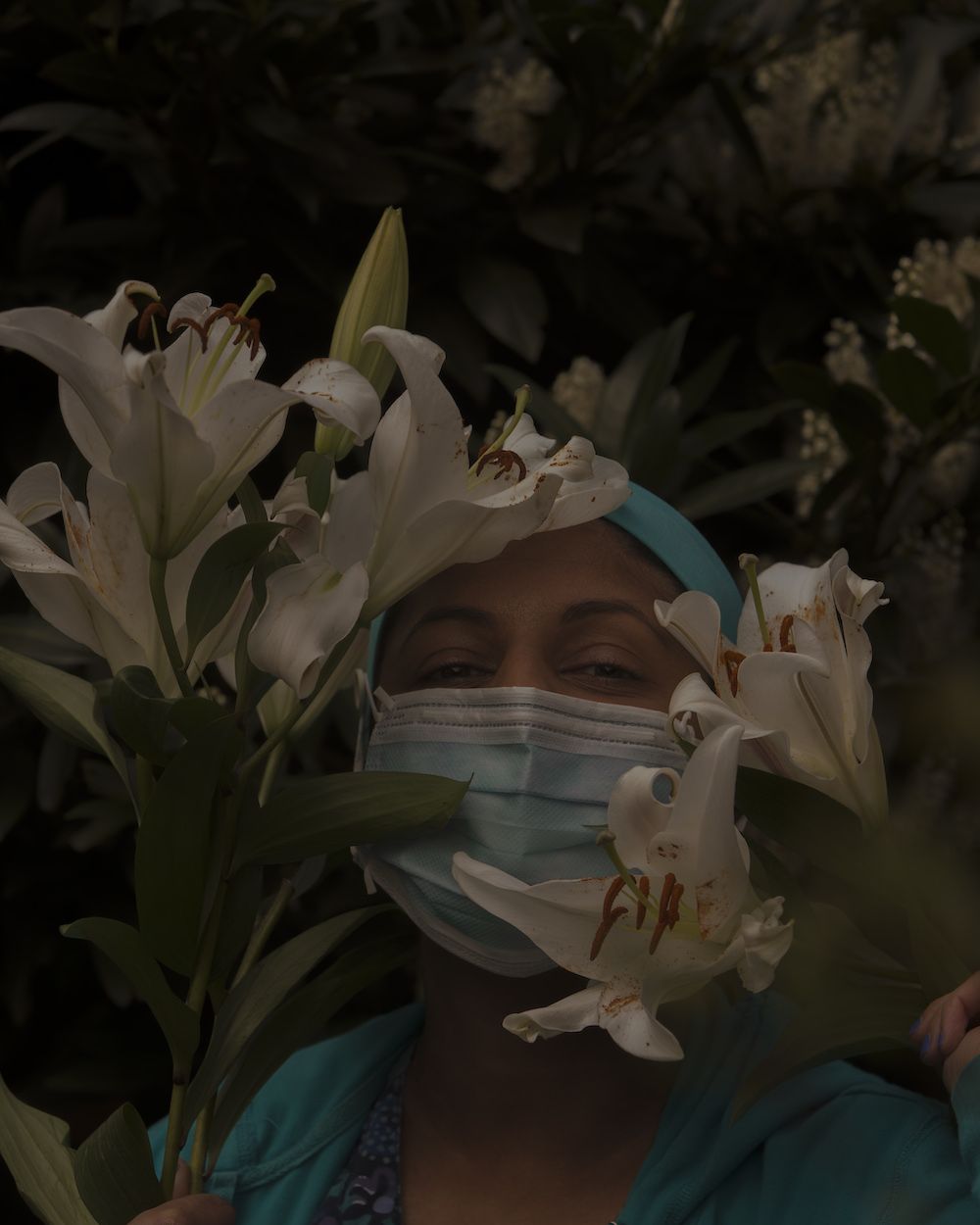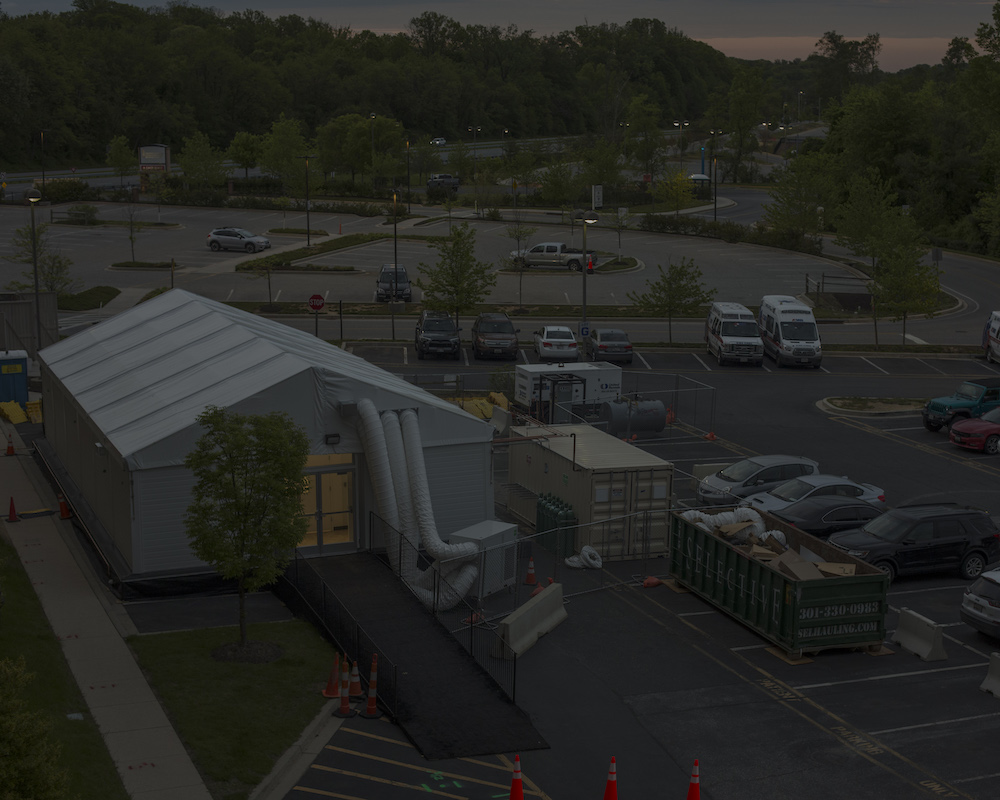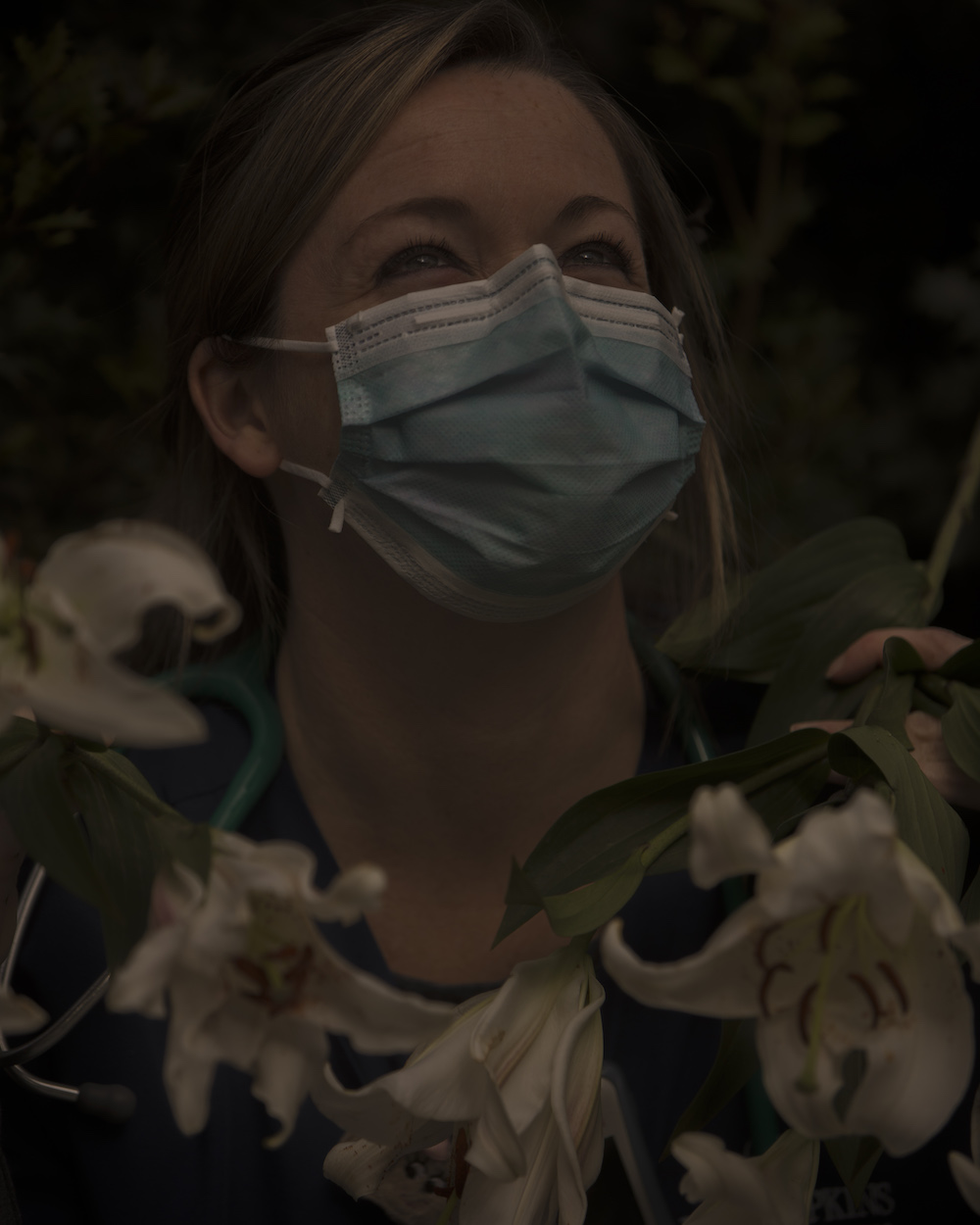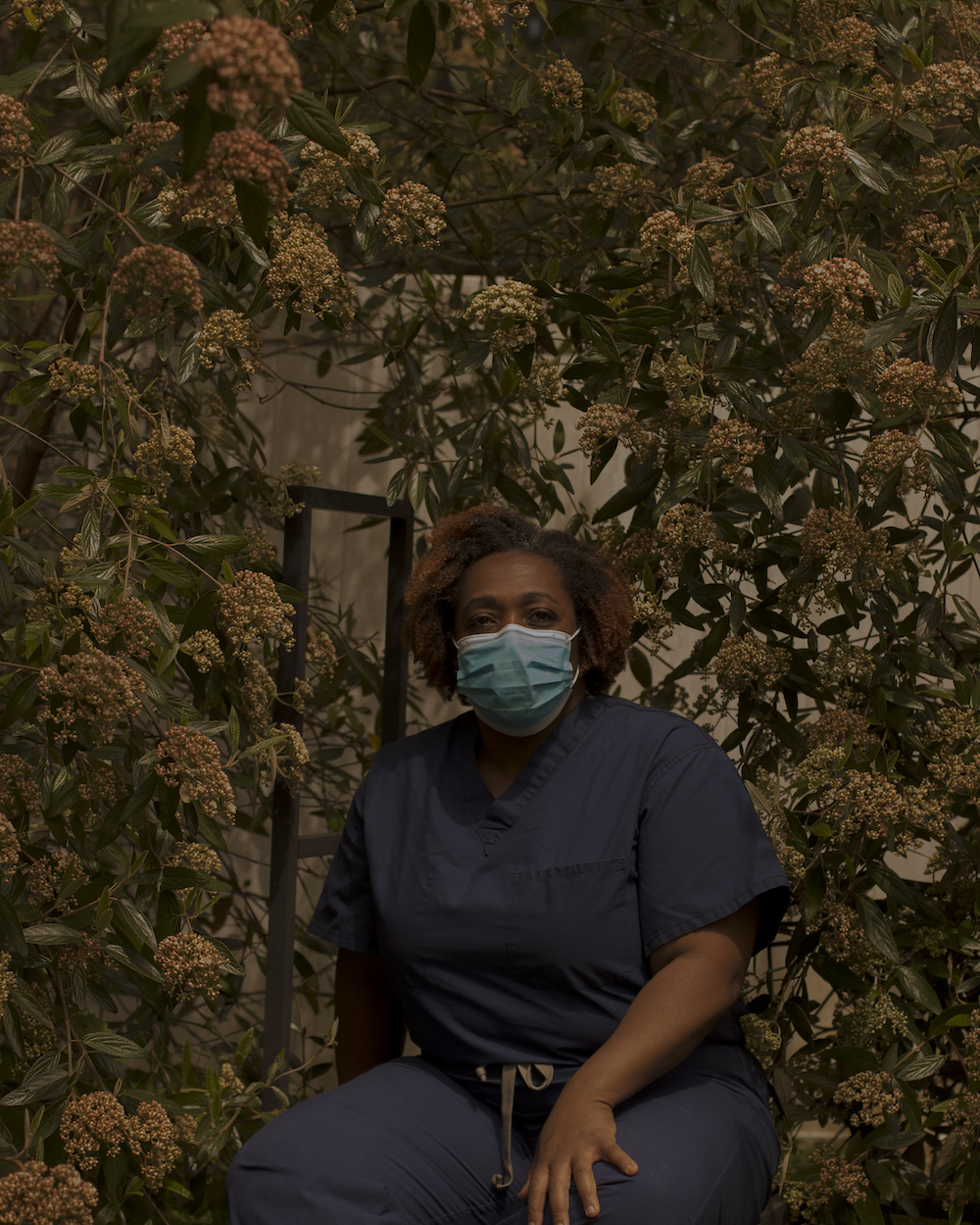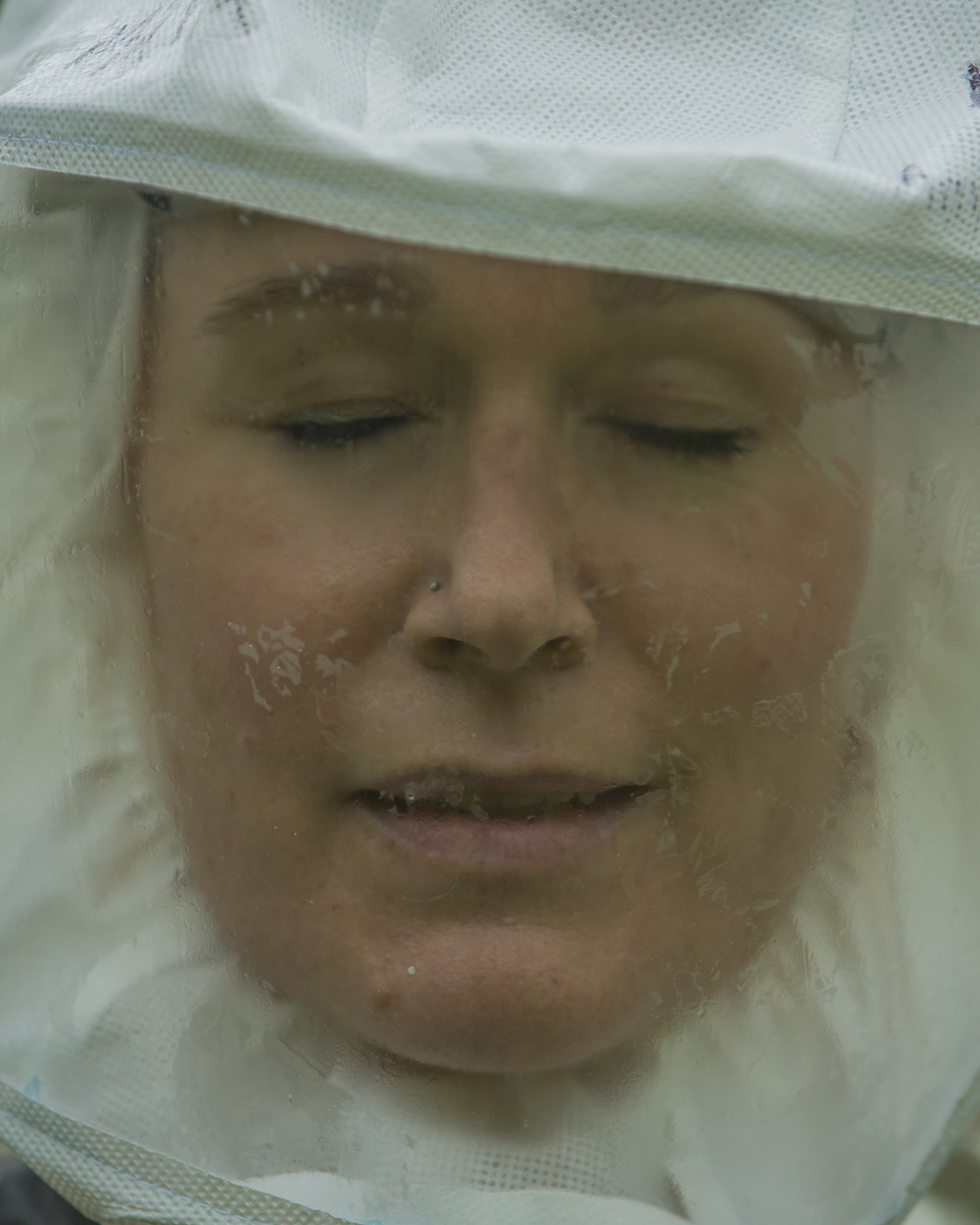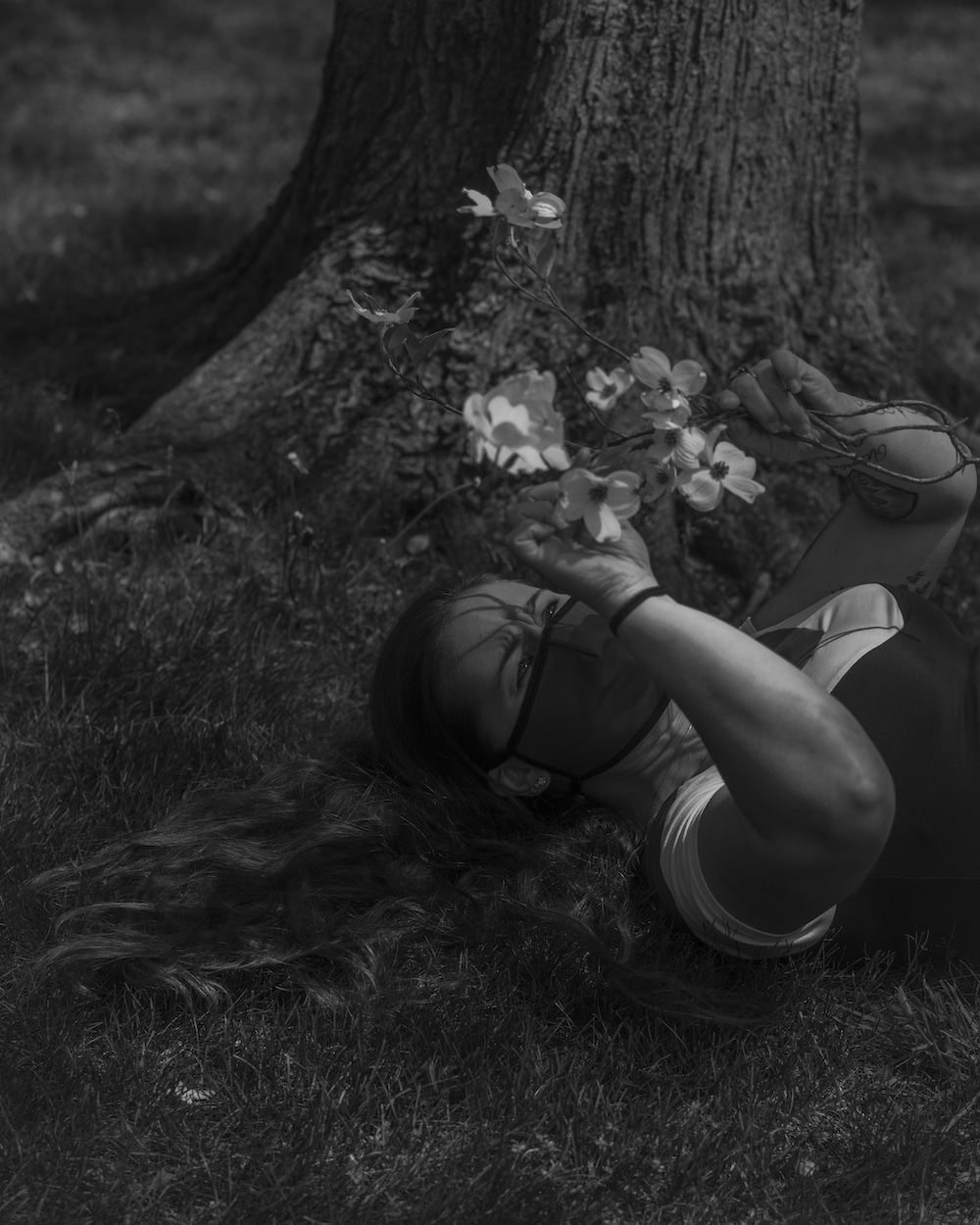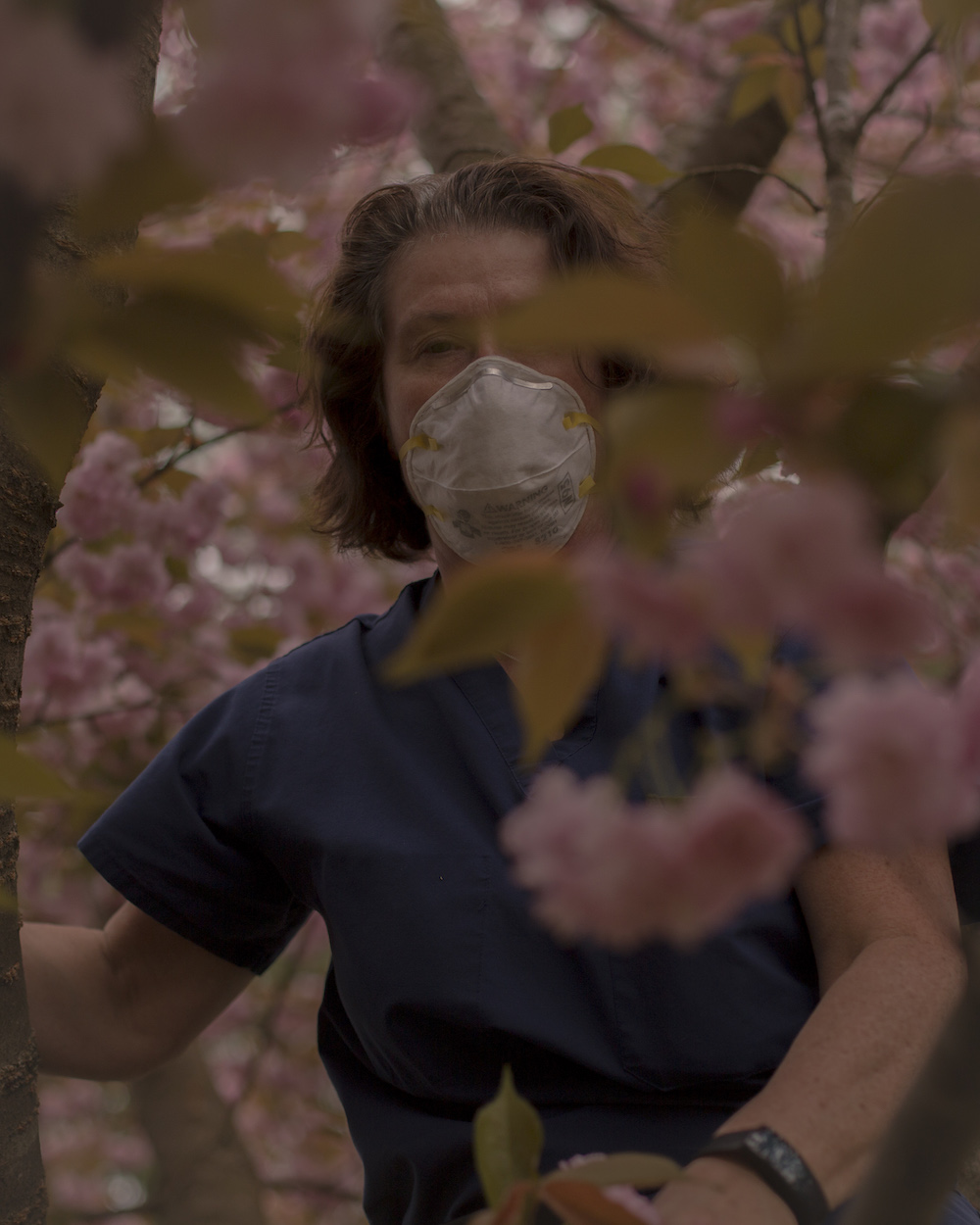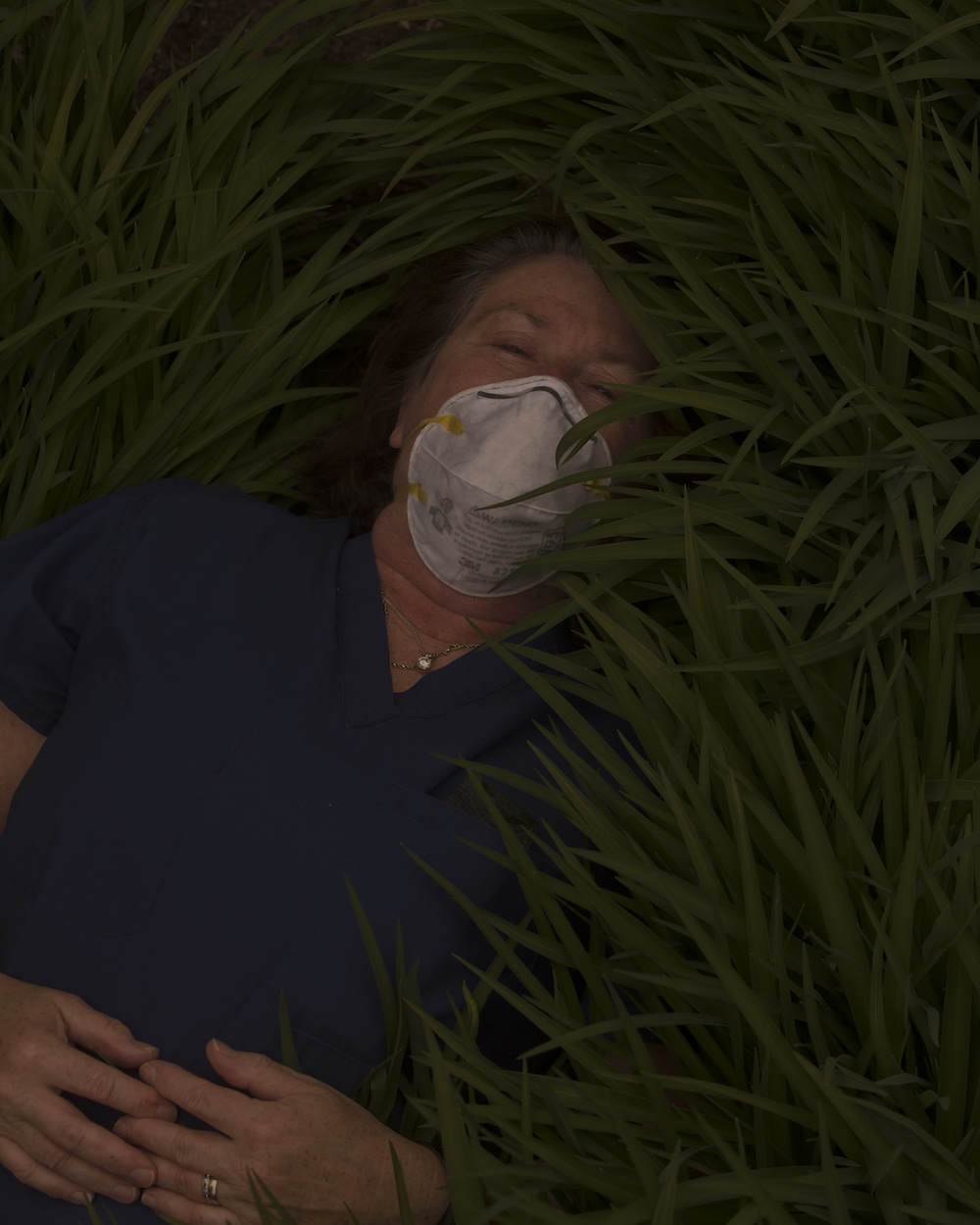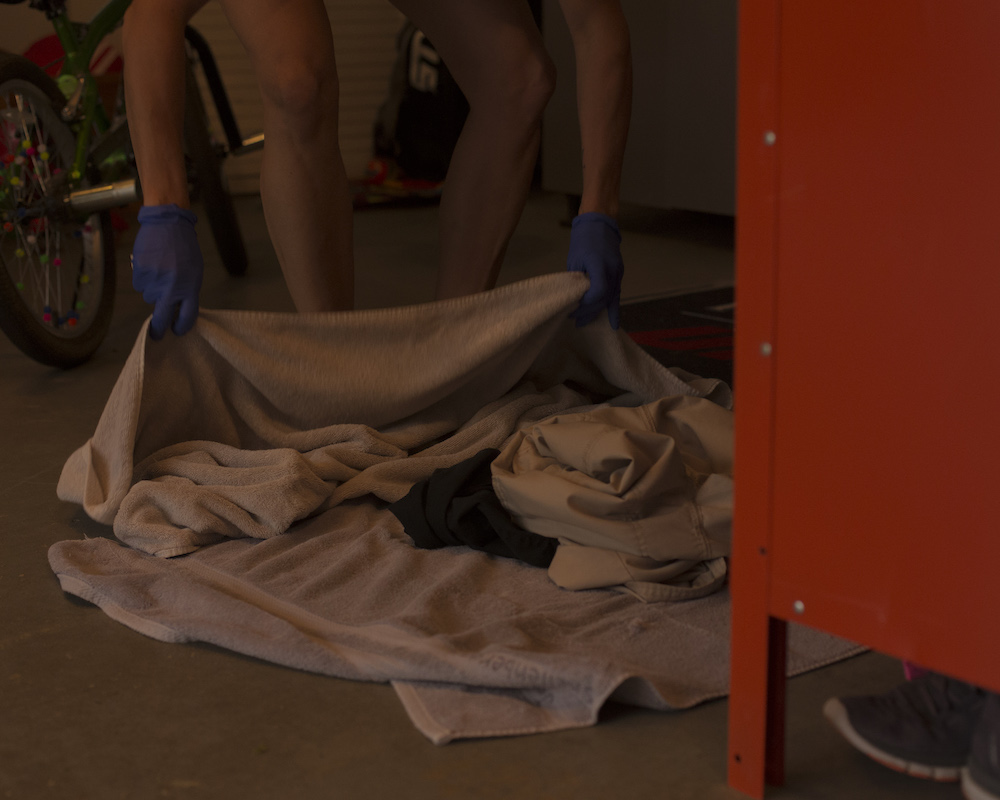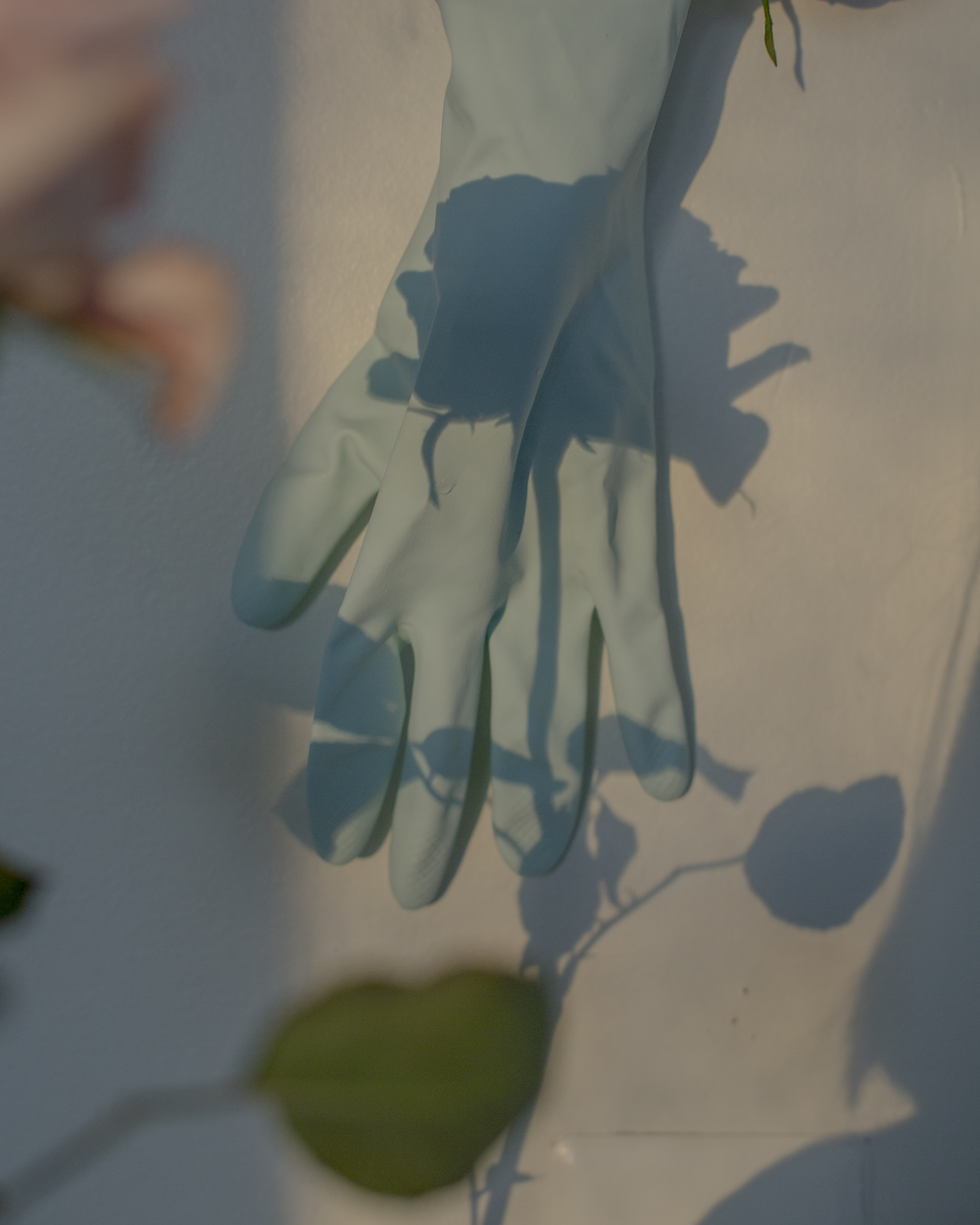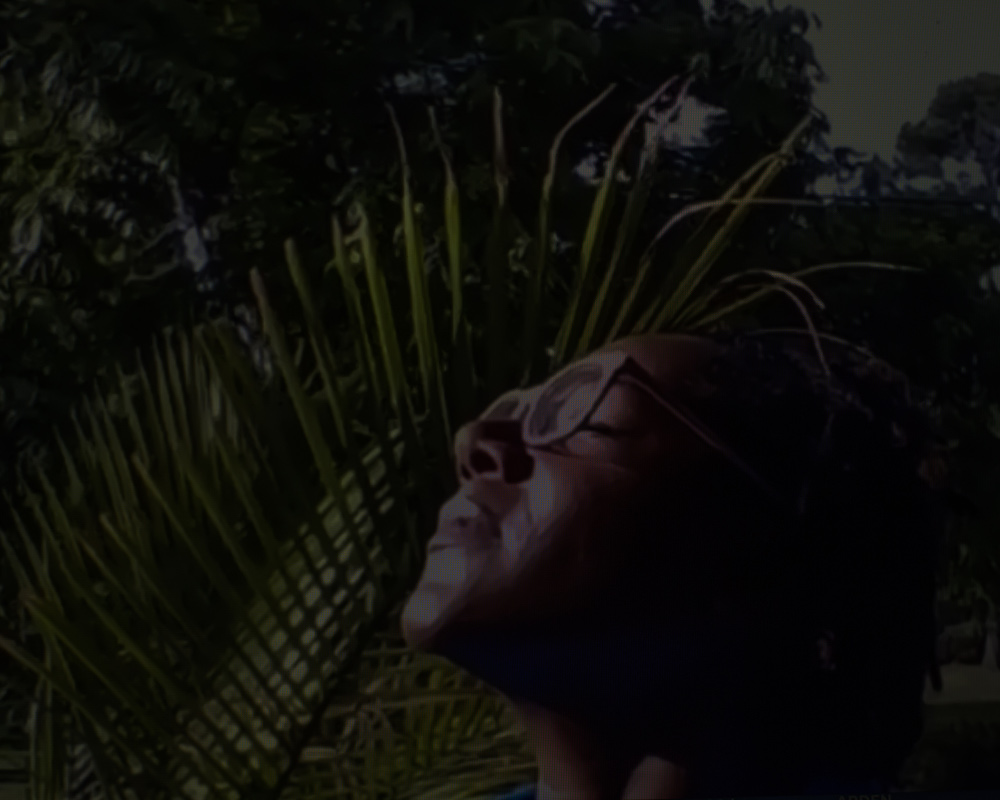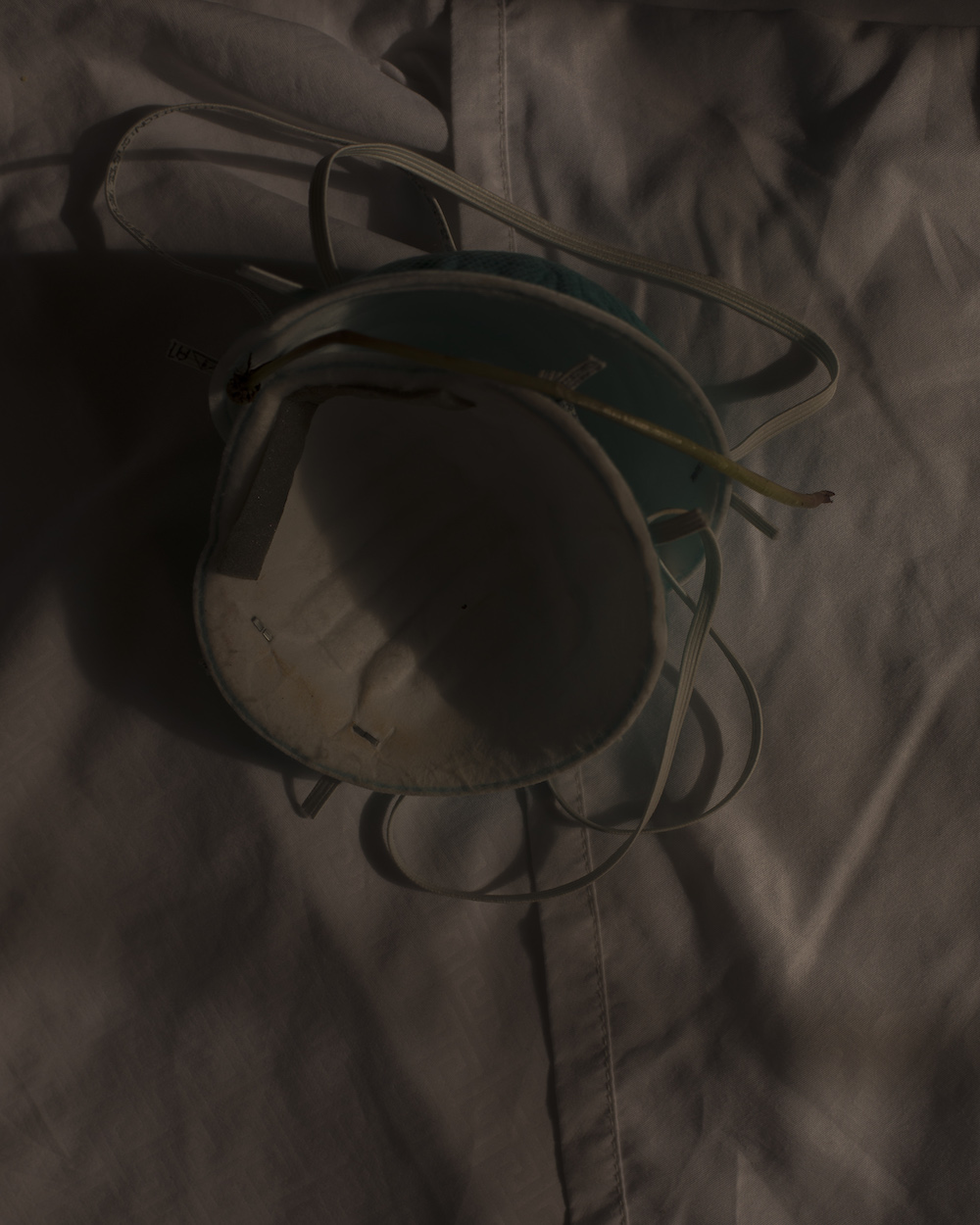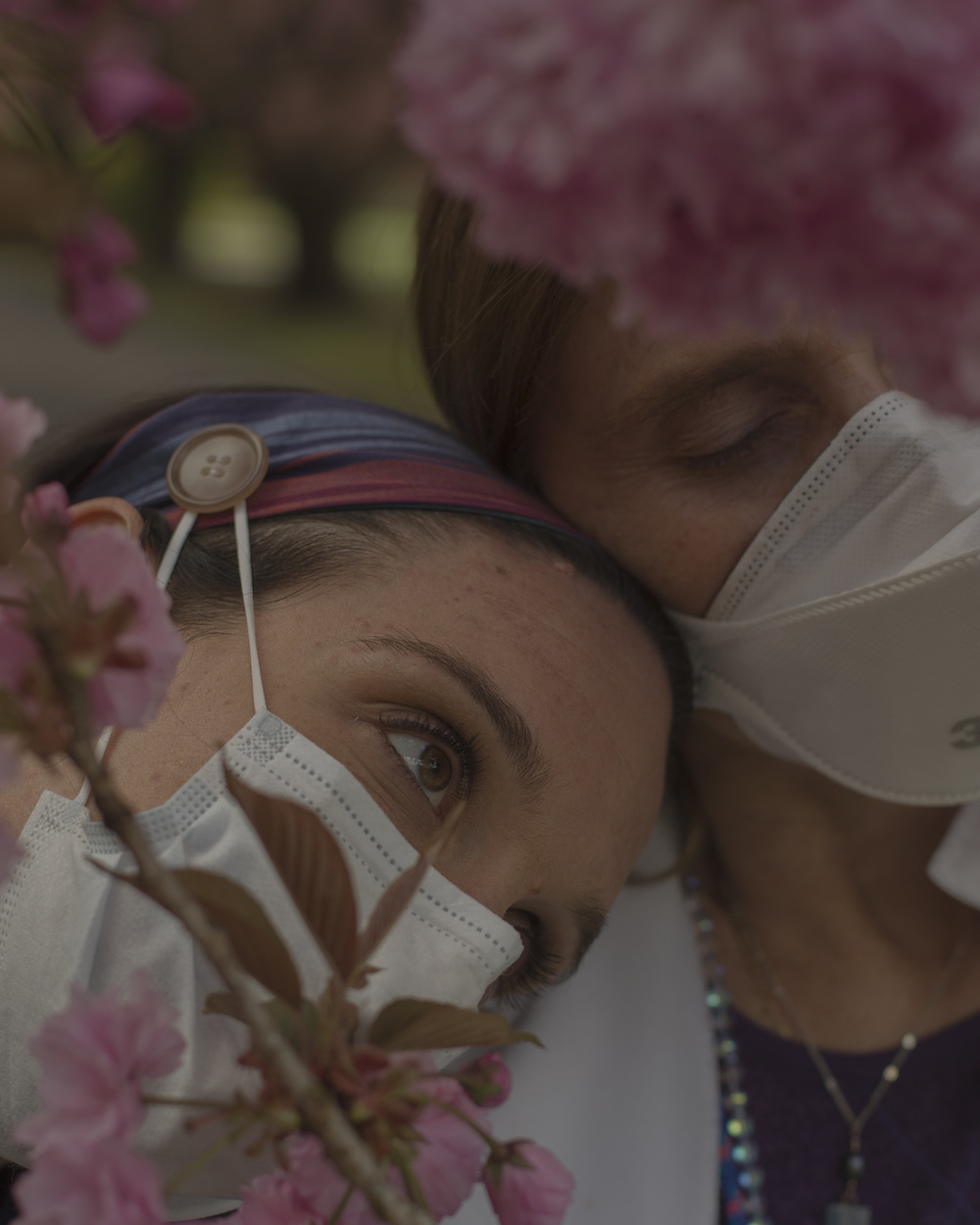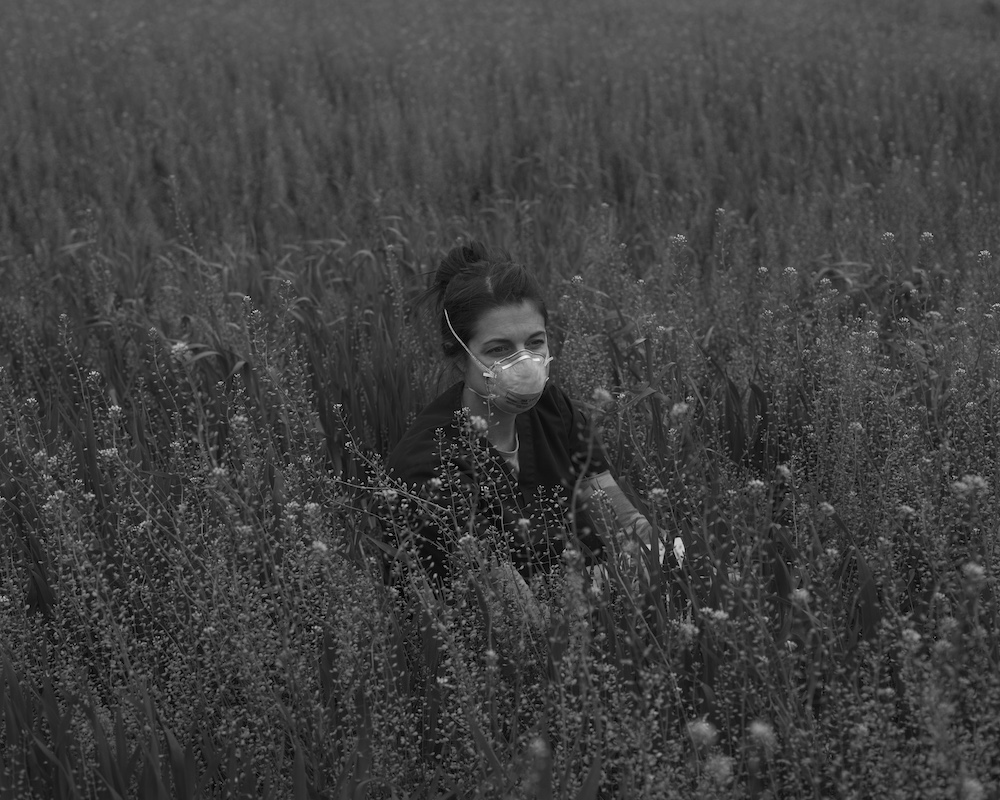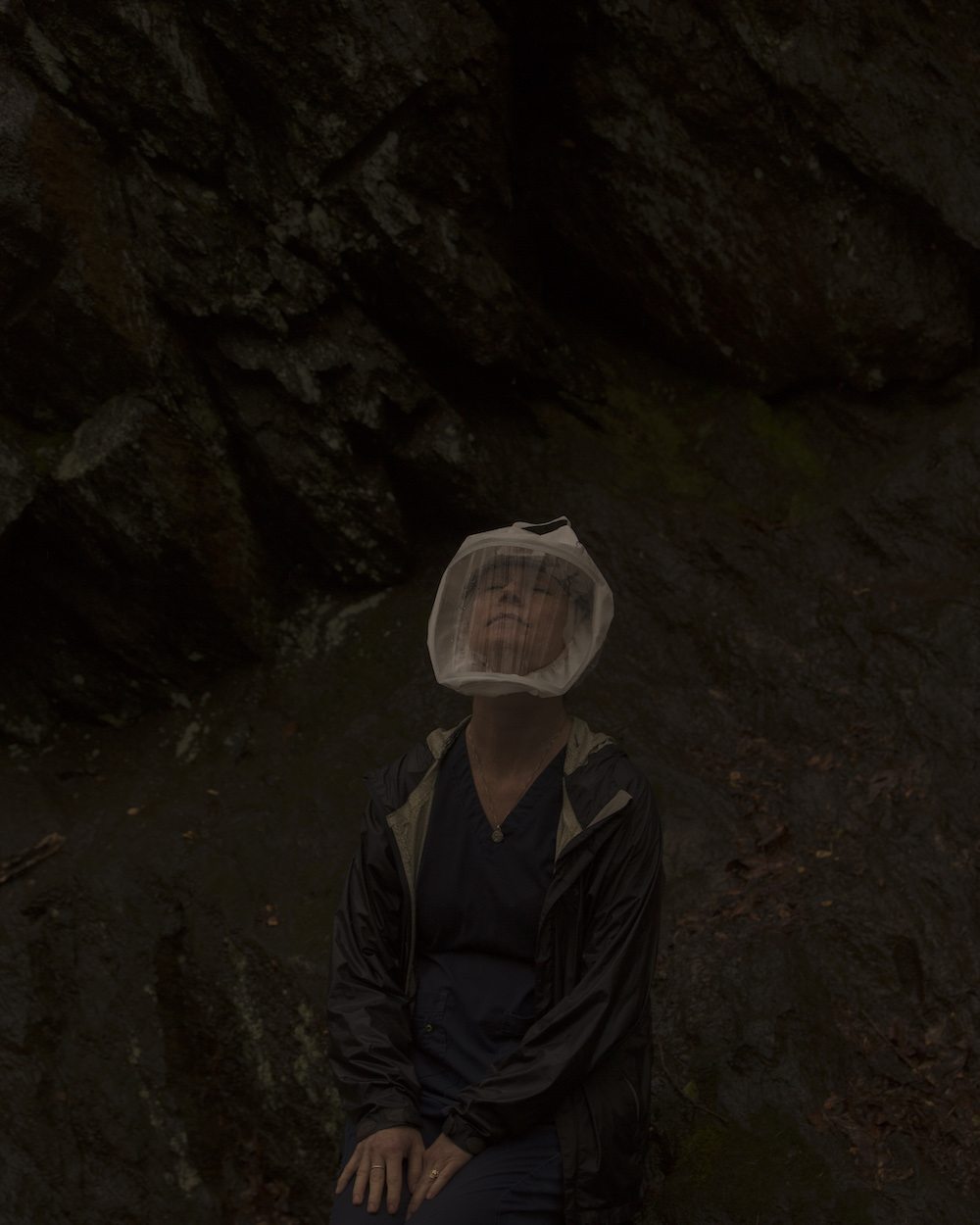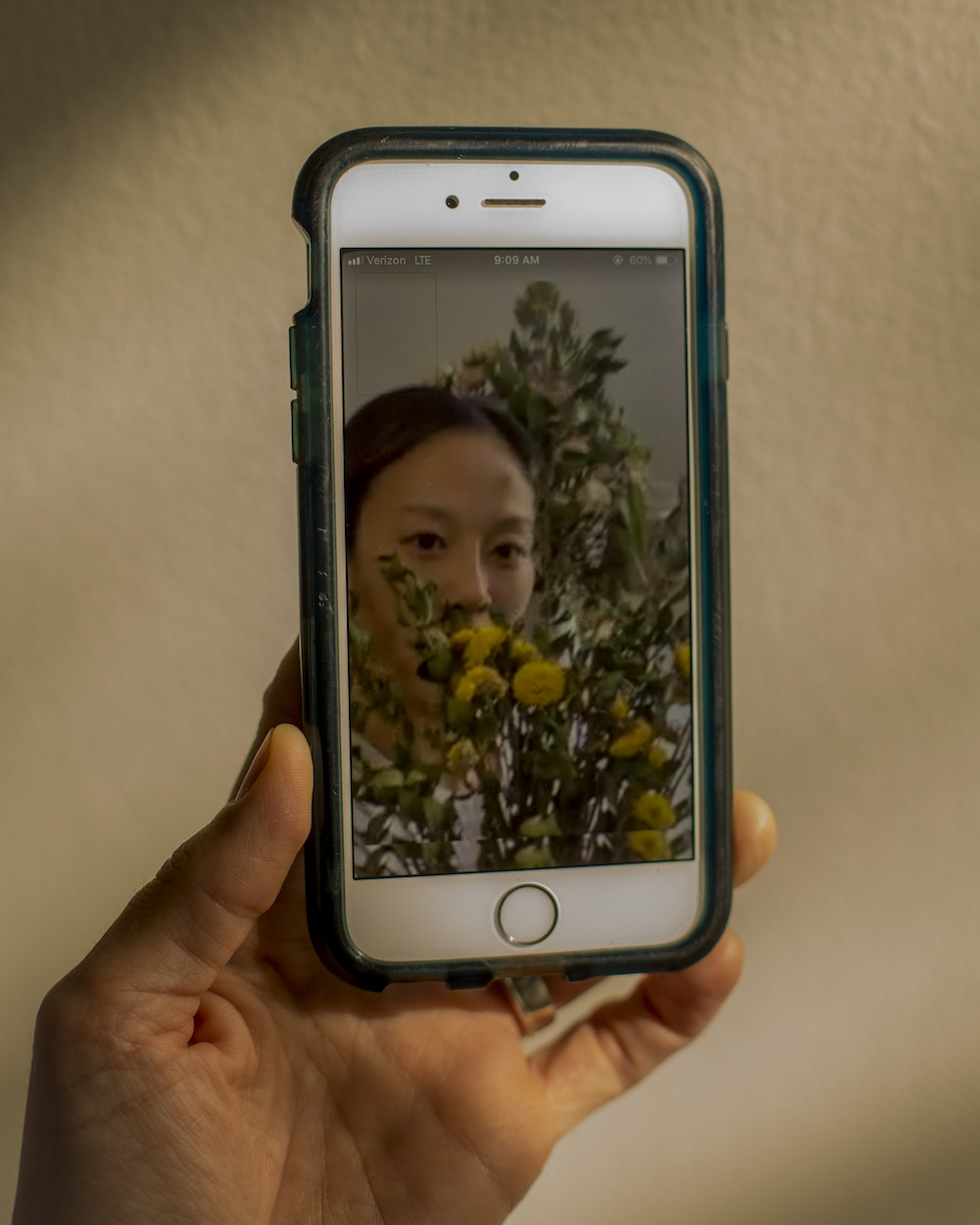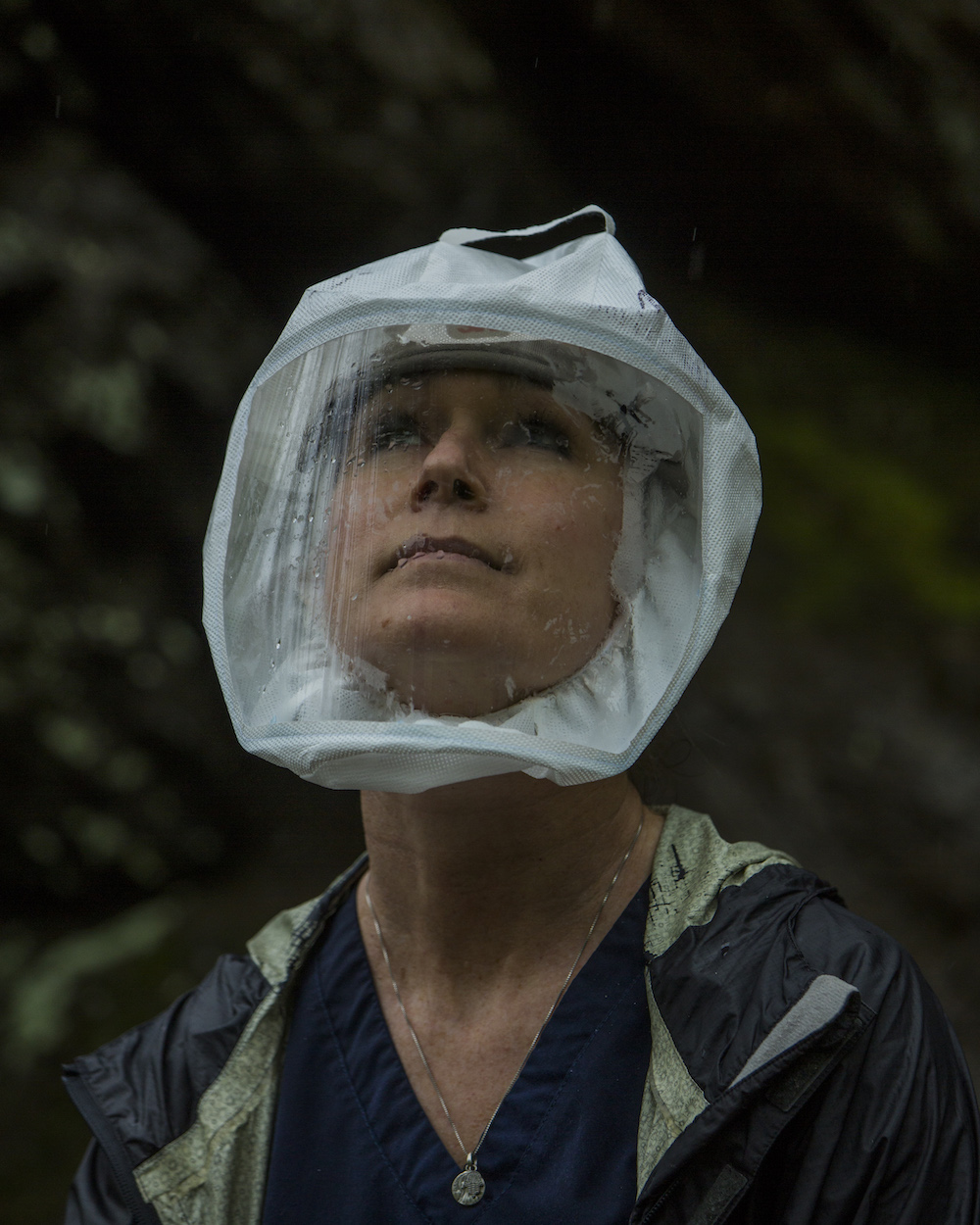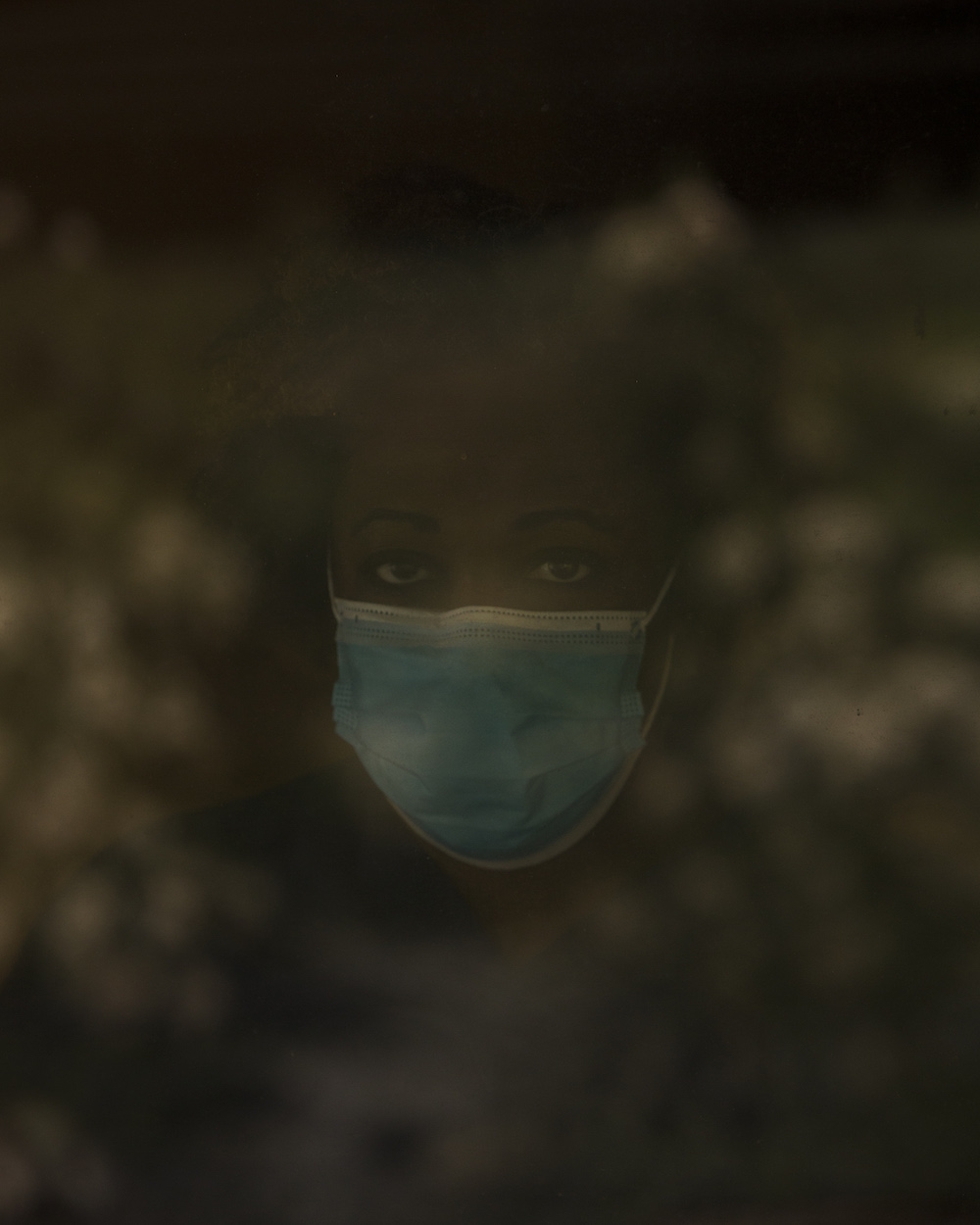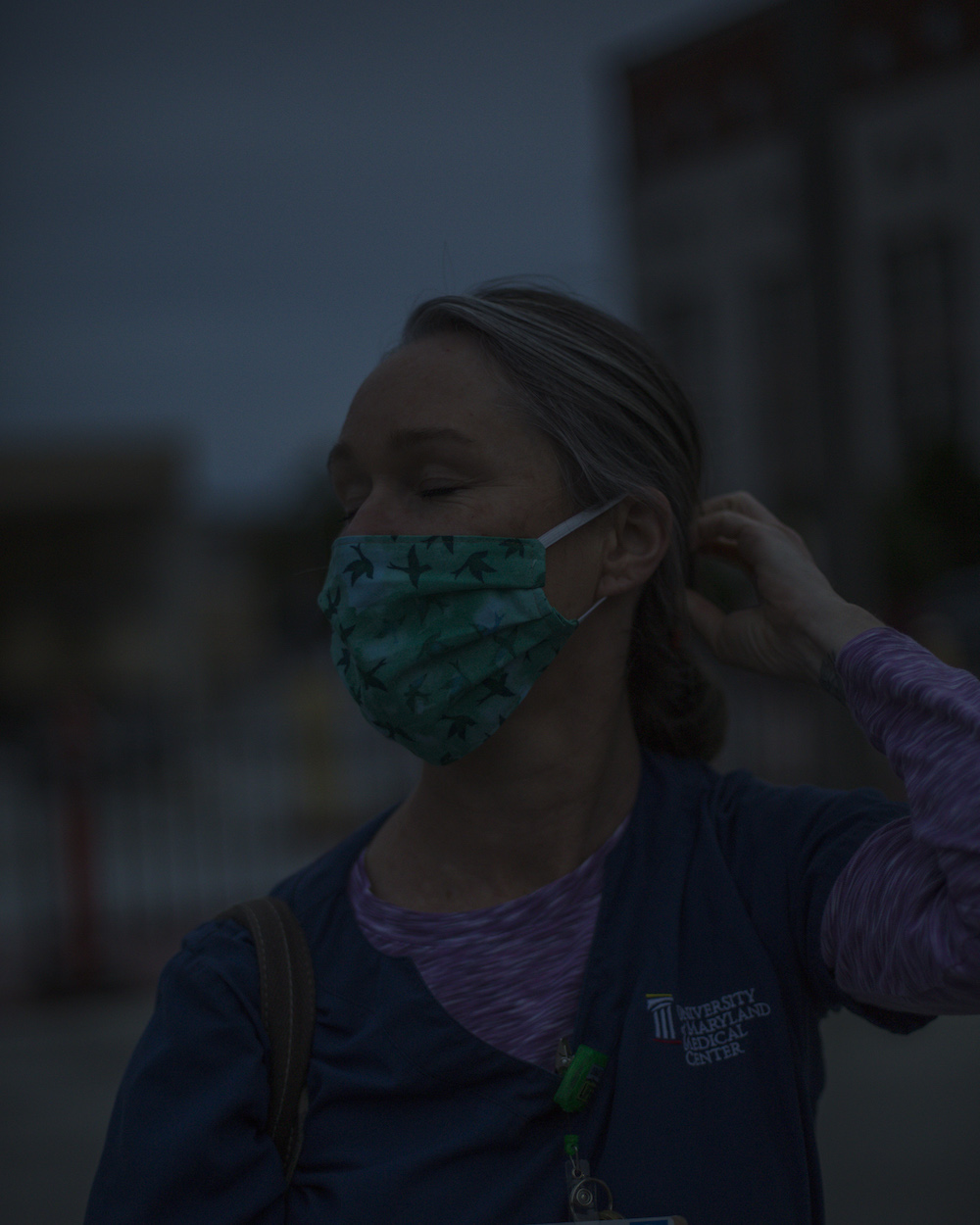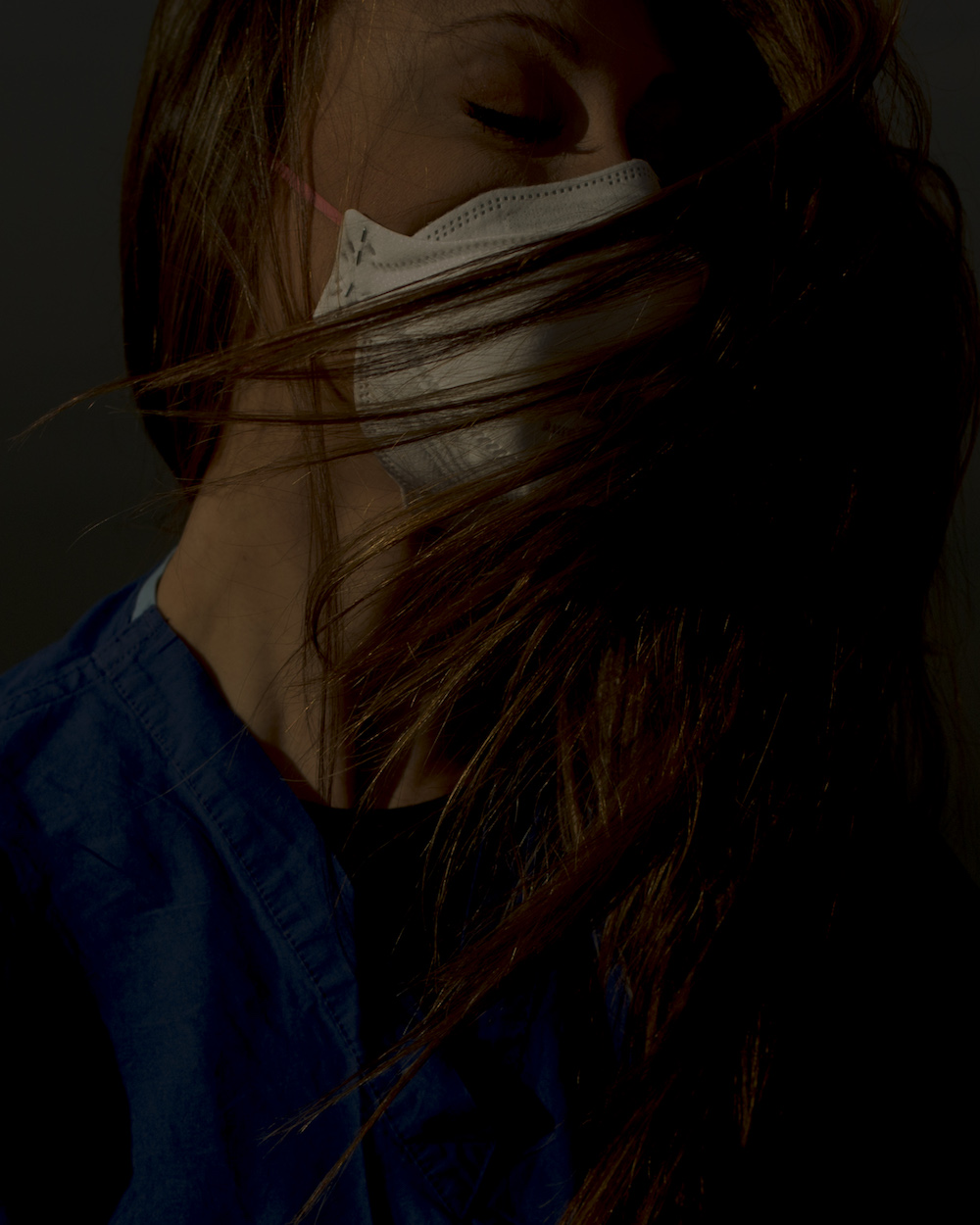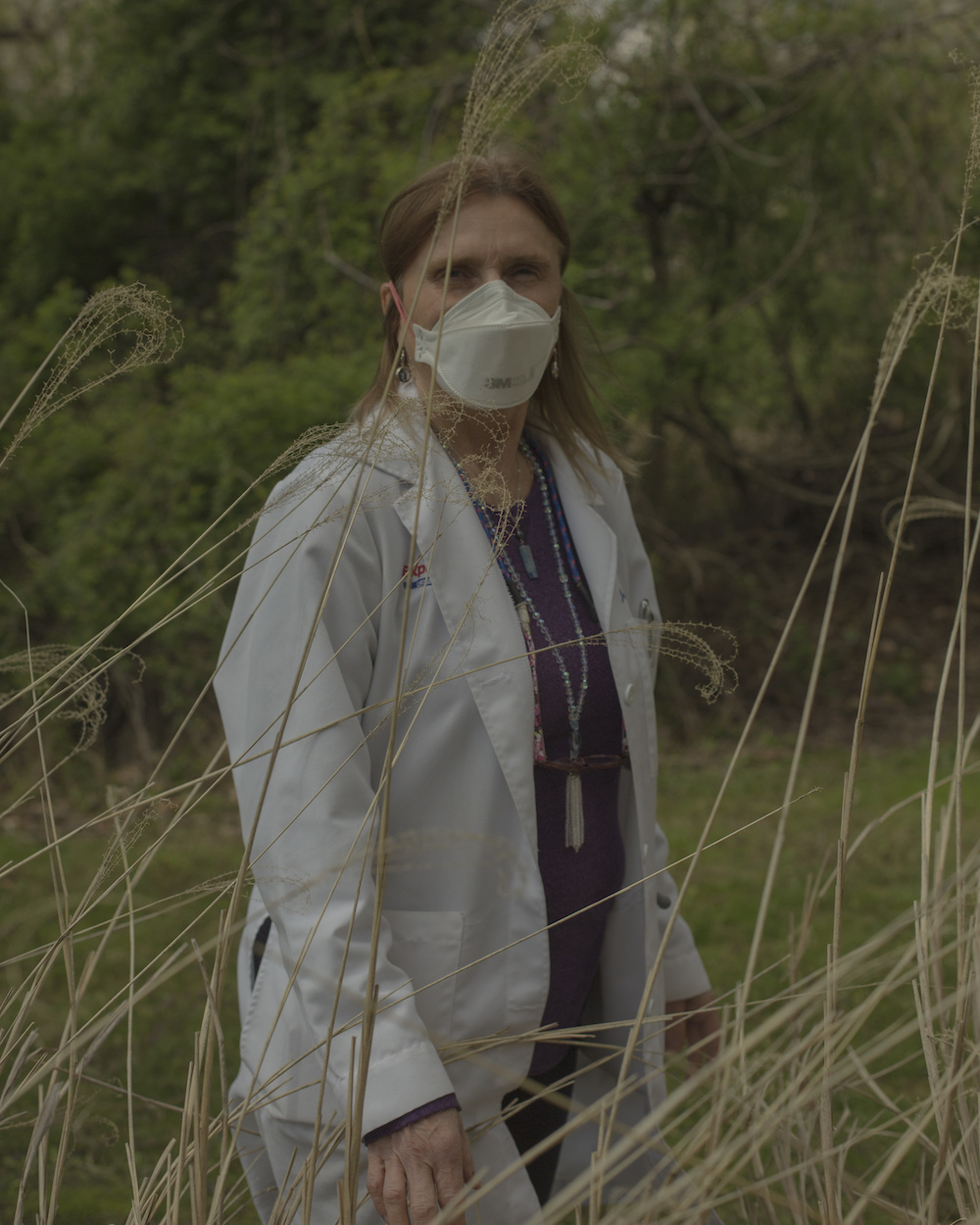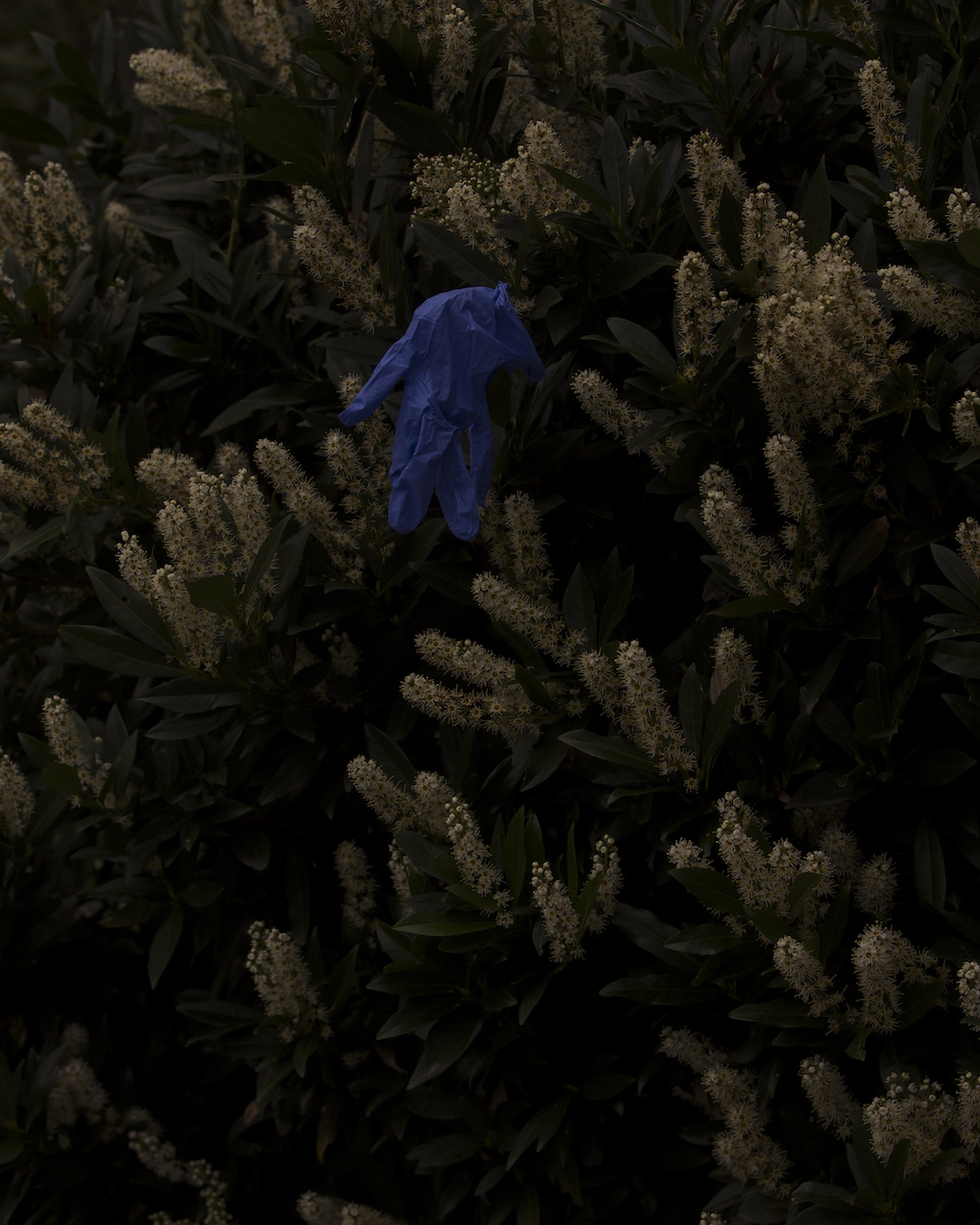Around the start of stay-at-home orders in Maryland, photographer Jill Fannon trained her lens on the healthcare workers in her family, documenting them from a distance outdoors where it was safer to do so. She began with her aunt and cousin, both physician’s assistants, who expressed a need for adequate PPE, the protective gear necessary to shield them from viral transmission in a workplace full of danger.
Fannon’s aunt gave her a headband she had sewn, which had buttons on the sides for a paper face mask to loop onto, making it less irritating for the ears. A few days later, Fannon gave the headband to her friend Jaclyn, a speech pathologist at a Maryland hospital, when she photographed her out in a field.
Fannon has expanded her series one subject at a time, documenting first responders and healthcare workers that so many call heroes in their protective gear, to remind all of us that these individuals lead complex, multifaceted, and meaningful lives. They are our mothers, sisters, colleagues, and friends who deserve our gratitude and support.
